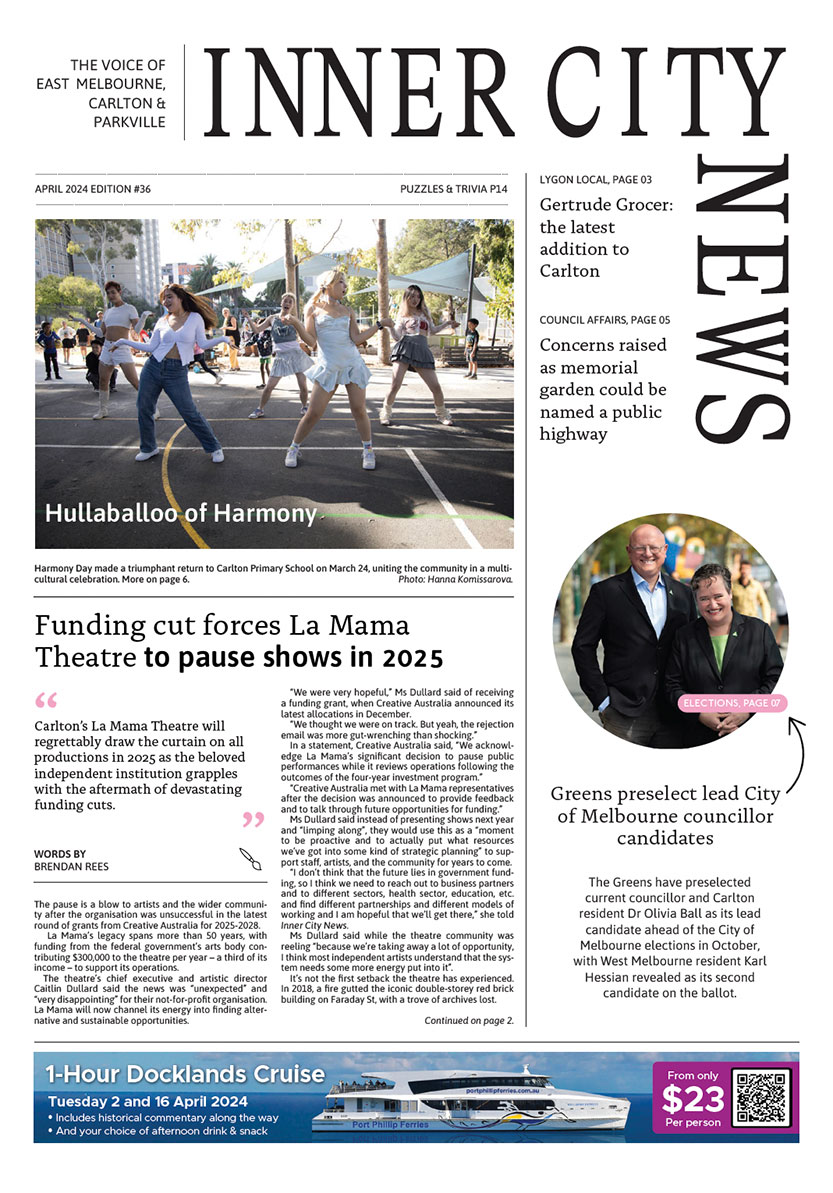When Carlton was a slum
By Jeff Atkinson
Carlton was not always the pleasant affluent suburb that it is today. For most of the 20th century it was regarded as a slum.
It had a reputation so bad that the government thought the best thing to do was to knock it all down and rebuild the suburb in a more modern style.
It started off as a desirable place to live. When it was first developed in the 19th century Carlton attracted a population of mainly middle-class artisans and well-off merchants. It was convenient to the city and on higher ground than neighbouring Fitzroy and Collingwood. The 1870s and 1880s were boom times for Carlton, a time when the great Victorian houses that we see today were constructed, built on the money from gold. Even the more modest terrace houses provided good quality accommodation for a largely middle-class population.
But in the 1890s Victoria experienced a severe economic depression, and this affected Carlton quite badly. Merchants and land speculators went bankrupt, and artisans and others found themselves out of work. Many of the grand homes were converted into boarding houses. Overcrowding became a problem and housing conditions and the health situation deteriorated badly. Carlton acquired an image of an area of unacceptable poverty, hardship and depravity. In 1890 the Melbourne City Council’s health officer reported that south Carlton was: “perhaps the most densely populated part of the city, and of late years it has become the refuge of the poorest class of the population. It is now, in a special sense, the district of narrow lanes and crowded courts, and of old dilapidated houses, occupied by persons having little regard for cleanliness”.
In 1937 a report to the Victorian Government described North Carlton in similar terms: “Hidden behind wide spacious streets there are slum pockets which are hot-beds of depravity and disease. In many houses, dilapidation of structure is such that bugs and other vermin cannot be eradicated. These houses are infected to such an extent as to be unfit for human habitation”.
The response of the Victorian Government to this was “slum clearance” – moving people out of these unhealthy and crime-ridden areas and knocking down the decrepit housing stock. In 1938 the Housing Commission of Victoria was established to do just that. However, its work was delayed by the Second World War and by the housing shortage immediately afterwards, which forced it to give priority to the building of new estates in the outer suburbs. But by the early 1960s it had started its work of knocking down the slums that supposedly “infested” the inner suburbs and replacing them with more modern public housing. The intention was to clear as far north as Fenwick St at least, which meant that the Carlton that we know today, including areas such as Rathdowne Village would not exist.
However, opposition to this soon developed, including from the professionals and academics who were increasingly moving into the area because of its proximity to the University. They valued the heritage qualities of Carlton and had the money to renovate the old houses. Effective opposition eventually stopped the clearances, more or less at Princes St. In 1973 the Victorian Premier visited Carlton to announce that the slum-clearance plans had been dropped in favour of heritage conservation for the inner suburbs. Carlton was saved. Since then of course it has become the desirable cosmopolitan suburb that we know and value today •

Carlton language school championed by Ukrainian refugee



 Download the Latest Edition
Download the Latest Edition